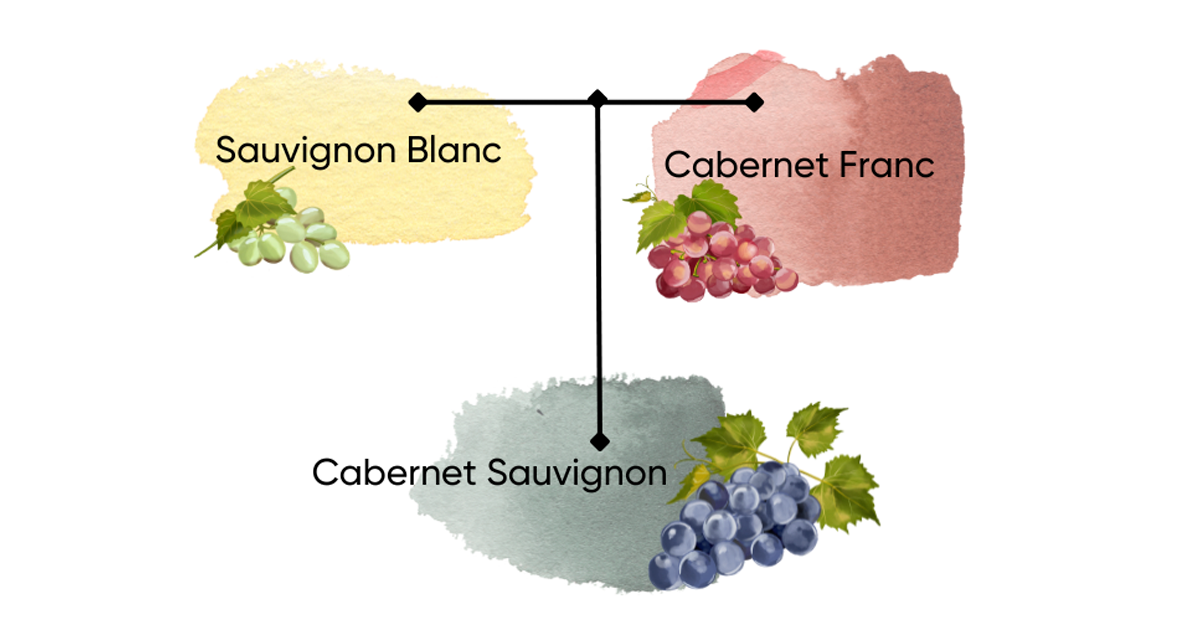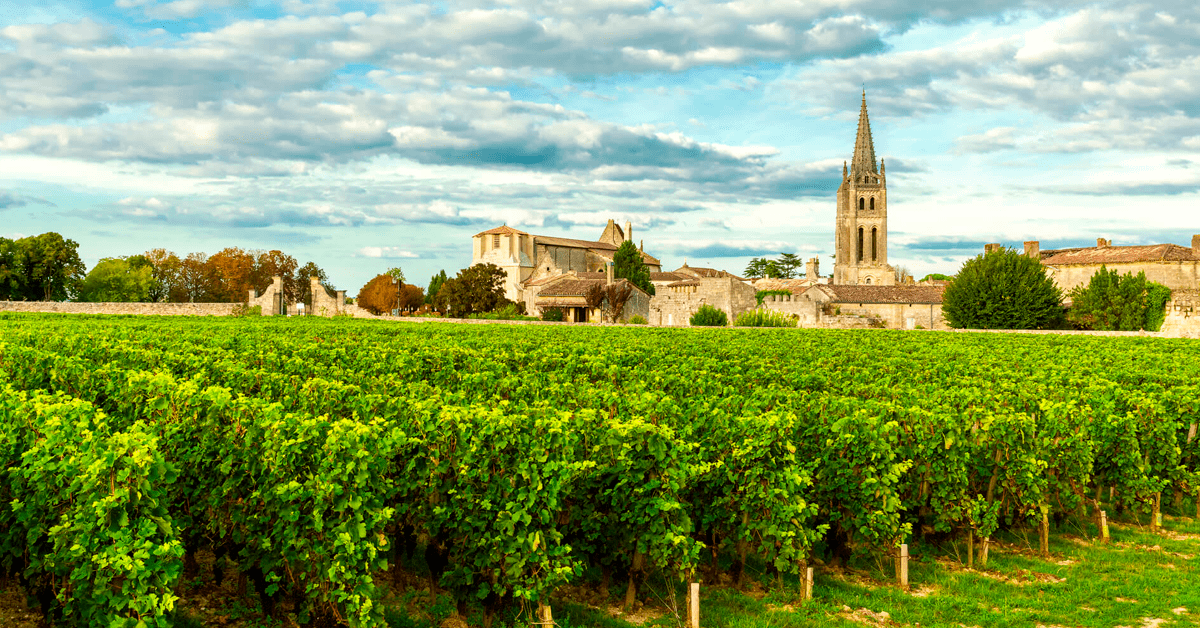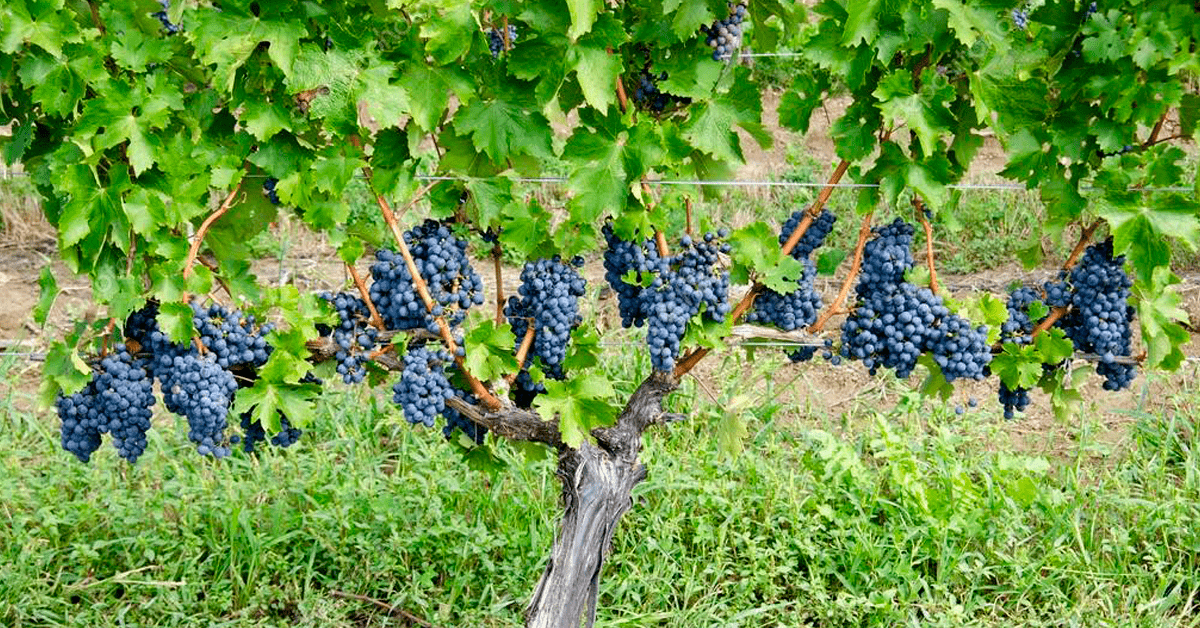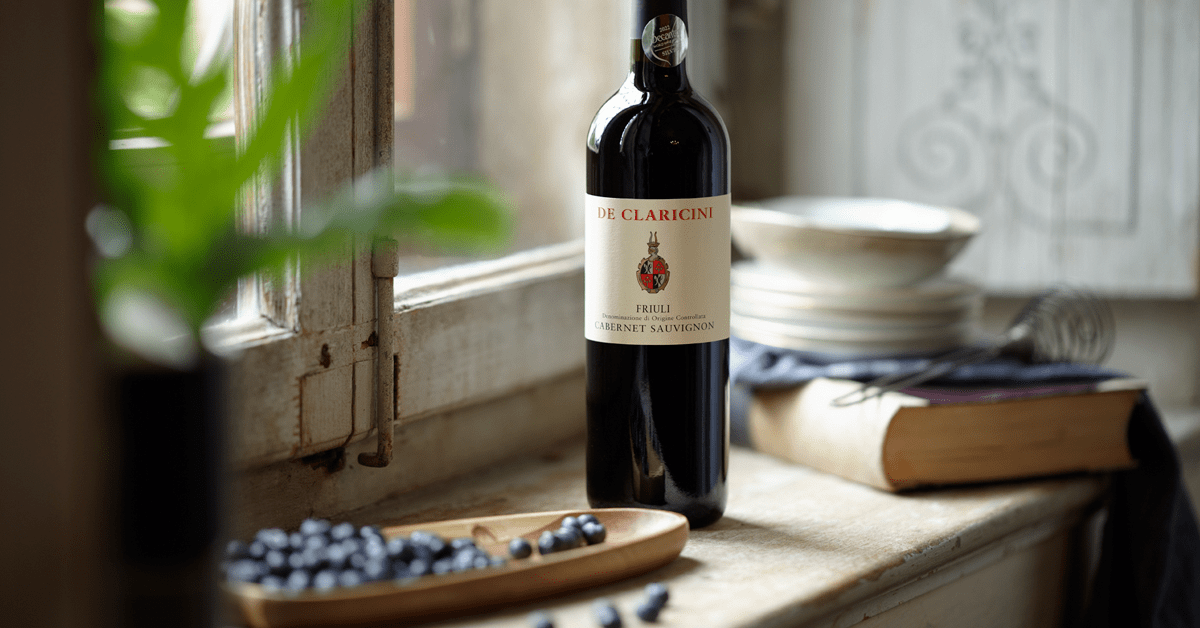
Cabernet Sauvignon is one of the world’s most widely recognized red wine grape varieties. It is grown in nearly every major wine-producing country among a diverse spectrum of climates from Canada’s Okanagan Valley to Lebanon’s Beqaa Valley. Here are some key details about Cabernet Sauvignon:

Origin & History
Cabernet Sauvignon’s origin lies in a serendipitous crossing between two other grape varieties: Cabernet Franc and Sauvignon Blanc. This cross occurred in the 17th century in southwestern France, creating what would become one of the most renowned and widely planted red wine grapes in the world.
Cabernet Franc, the parent grape, is one of the major black grape varieties worldwide and is principally grown for blending with Cabernet Sauvignon and Merlot in the Bordeaux style. It is lighter than Cabernet Sauvignon and contributes finesse and a peppery aroma to the blend. Cabernet Franc typically presents a more subtly perfumed and less overtly fruity character compared to its more famous progeny. It also ripens slightly earlier than Cabernet Sauvignon, making it more suitable for cooler climates. Its flavour profile often includes hints of tobacco, raspberry, bell pepper, and cassis, and it tends to have lower tannin levels and a more approachable, softer profile.
Sauvignon Blanc, on the other hand, is a white wine grape variety from the Bordeaux region of France. It is now widely cultivated in wine regions across the world and is known for its crisp, dry, and refreshing green and citrus fruit flavours. Typical flavour notes include green apple, lime, passion fruit, and white peach. Unlike the Cabernet varieties, Sauvignon Blanc is known for its pronounced and sometimes aggressive acidity, which contributes to its characteristic zesty and refreshing quality.
The crossing of these two varieties to create Cabernet Sauvignon resulted in a grape that combines the robust, full-bodied character of Cabernet Franc with the higher acidity and potential for complexity from Sauvignon Blanc. This unique combination gave rise to a grape capable of producing deeply coloured, richly flavoured, tannic wines with great ageing potential. The blend of these traits is part of what has made Cabernet Sauvignon such a globally celebrated wine grape, capable of thriving in various climates and producing a wide range of wine styles.

Ageing Potential
The ageing potential of Cabernet Sauvignon is one of its most celebrated characteristics, contributing significantly to its status as a premier red wine grape. This potential is primarily due to the grape’s inherent qualities, including high tannin levels and a robust structure, which allow it to evolve and improve over time.
High Tannin Content: Cabernet Sauvignon grapes are naturally high in tannins, which are compounds that provide structure and body to the wine. Tannins act as natural preservatives, which is why wines high in tannins, like Cabernet Sauvignon, can age and develop for many years, even decades. As the wine ages, the tannins soften, reducing bitterness and astringency, and leading to a smoother, more rounded mouthfeel.
Oak Aging: The ageing process in oak barrels is another key factor in the ageing potential of Cabernet Sauvignon. During this period, the wine undergoes subtle chemical changes, resulting in the development of complex flavours and aromas. Oak barrels often impart flavours like vanilla, cedar, and spices, adding to the wine’s complexity. The interaction between the wine and the oak also allows for a slow intake of oxygen, a process known as micro-oxygenation, which further softens the tannins and enhances the wine’s texture and flavour profile.
Development Over Time: As Cabernet Sauvignon ages, its flavour profile transforms. The primary fruit flavours of black currant, cherry, and blackberry evolve into more nuanced and layered secondary and tertiary notes such as tobacco, leather, earth, and graphite. The colour of the wine also changes, shifting from deep purple to a more brick-like hue. This development results in a more complex and harmonious wine, with integrated flavours and a refined character.
Longevity: The longevity of Cabernet Sauvignon is notable. While many red wines are best consumed within a few years of bottling, a high-quality Cabernet Sauvignon can continue to improve for decades under the right storage conditions. This longevity makes it not only a delight for wine enthusiasts but also a valuable addition to any wine collection.

Popular Regions
Cabernet Sauvignon has successfully established itself in various wine regions around the globe, each offering unique expressions of this versatile grape. Its adaptability to different climates and soils contributes to the diverse styles of Cabernet Sauvignon wines produced worldwide.
Bordeaux, France: Bordeaux is the spiritual home of Cabernet Sauvignon, where it is typically blended with Merlot and other varieties to create the region’s famous Bordeaux blend. The grape thrives in the gravelly soils of the Left Bank, particularly in the Médoc and Graves appellations. Here, the wines are known for their structure, depth, and longevity, often showcasing flavours of blackcurrant, plum, and various earthy and herbaceous notes.
Napa Valley, California: In Napa Valley, Cabernet Sauvignon has found a new and illustrious home. The warmer climate of this region results in riper grapes, leading to more opulent and fruit-forward wines compared to their Old World counterparts. Napa Cabernets often exhibit rich flavours of black cherry, blackberry, and cassis, with opulent textures and well-integrated oak influence. Regions like Oakville, Rutherford, and Stags Leap District are particularly noted for their exceptional Cabernet Sauvignon wines.
Coonawarra, Australia: Coonawarra in South Australia is famous for its unique terra rossa soil, a red clay over limestone, which imparts a distinct character to its Cabernet Sauvignon. These wines are known for their elegance, fine tannins, and flavours of mint, black currant, and earthy notes. Coonawarra Cabernets often combine the fruit intensity of New World wines with the structure and complexity reminiscent of Bordeaux.
Maipo Valley, Chile: Chile’s Maipo Valley is another significant region for Cabernet Sauvignon, benefiting from the Andean mountain influence and a range of microclimates. The wines here can vary from rich and ripe to more restrained and elegant, often with a characteristic note of green pepper or eucalyptus, alongside the more traditional blackcurrant and plum flavours.
Margaret River, Australia: Margaret River in Western Australia produces Cabernet Sauvignon with a unique profile. Influenced by its coastal location, the wines typically exhibit a balance between fruit richness and a refreshing acidity, often with notes of blackberry, tobacco, and a hint of herbaceousness.

Food Pairing
Cabernet Sauvignon’s robust flavour profile and high tannin content make it an excellent partner for a variety of rich and hearty dishes. The key to successful food pairing with this wine is to match its intensity and structure with similarly bold flavours in the food.
Red Meats: One of the classic pairings for Cabernet Sauvignon is red meat. The wine’s high tannins are ideal for cutting through the fat of richer meats, such as ribeye steaks, lamb chops, or braised short ribs. These meats not only stand up to the boldness of the wine but also help to soften its tannins, making both the dish and the wine more enjoyable.
Grilled and Smoked Dishes: Grilled or smoked flavours work exceptionally well with Cabernet Sauvignon. The char on grilled steak or smoked brisket complements the toasty, smoky notes often found in the wine, especially those aged in oak barrels. The combination of these smoky flavours with the dark fruit and spice notes of the wine creates a harmonious and satisfying pairing.
Rich Sauces and Spices: Hearty sauces, such as a rich Bolognese or a peppercorn sauce, pair beautifully with Cabernet Sauvignon. The wine’s bold flavours can stand up to the intensity of these sauces. Similarly, dishes with robust spices, like a spice-rubbed roast or a hearty stew, can complement the complexity of the wine.
Bold Cheeses: When it comes to cheese, Cabernet Sauvignon pairs well with aged varieties that have a strong flavour and firmer texture, like aged cheddar, gouda, or blue cheese. The richness and sharpness of these cheeses balance the tannic structure of the wine.
Vegetarian Options: For vegetarian pairings, dishes with rich umami flavours, like portobello mushrooms or lentil-based dishes, can be a good match. The earthy elements of these foods harmonise with the dark fruit and earthy notes in the wine.
When pairing Cabernet Sauvignon with food, it’s important to consider the preparation and seasoning of the dish. The wine’s high tannins and bold flavours are best complemented by equally rich and intense ingredients, making it a versatile choice for a variety of cuisines and cooking styles. Whether it’s a simple grilled steak or a complex, spice-laden stew, Cabernet Sauvignon can enhance the dining experience with its powerful and multifaceted profile.

Cultivation & Harvesting
The cultivation and harvesting of Cabernet Sauvignon grapes are key factors in the quality and character of the wine produced. This grape variety has certain specific requirements and characteristics that influence how it is grown and when it is harvested.
Climate Preferences: Cabernet Sauvignon prefers a moderate to warm climate. The grape’s thick skin requires more heat to ripen fully compared to thinner-skinned varieties. This heat is necessary to develop the sugars and tannins that give the wine its characteristic flavours and structure. Regions with a long, warm growing season, like those found in Napa Valley, Bordeaux, and Coonawarra, are ideal for growing Cabernet Sauvignon. However, the grape can also adapt to cooler climates, as seen in parts of Chile and Washington State, although the resulting wines may have more pronounced acidity and less ripe fruit flavours.
Soil Requirements: This grape variety thrives in well-drained soils, which help to concentrate the flavours in the grapes. In Bordeaux, for example, the gravelly soil provides excellent drainage, which stresses the vines and results in more intensely flavored grapes. Similarly, the terra rossa soils of Coonawarra are well-drained, contributing to the region’s distinctively flavoured Cabernet Sauvignon.
Vineyard Management: Cabernet Sauvignon vines are vigorous and can produce high yields if not properly managed. However, higher yields usually mean less concentrated flavours in the grapes. Therefore, vineyard managers often employ techniques like green harvesting (removing some clusters early in the season) and canopy management to ensure better air circulation and sunlight exposure for the remaining clusters. These practices help to reduce the risk of disease and improve the quality of the grapes.
Harvest Timing: The timing of the harvest is crucial for Cabernet Sauvignon. The grape typically ripens late in the season. If harvested too early, the grapes may have underdeveloped flavours and excessive acidity; if picked too late, they can become overly ripe, losing acidity and gaining too much sugar, which can lead to overly alcoholic wines. Winemakers closely monitor the balance of sugar, acid, and tannins in the grapes to determine the optimal time to harvest.
Impact of Terroir: Like many grape varieties, Cabernet Sauvignon expresses the characteristics of its terroir (the environment in which it is grown). This expression can be seen in the differences between Cabernet Sauvignons from various regions around the world. Soil type, climate, topography, and local winemaking practices all contribute to the unique profile of each region’s Cabernet Sauvignon.
The cultivation and harvesting of Cabernet Sauvignon are vital to its success as a wine grape. The attention to climate, soil, vineyard management, and harvest timing all play significant roles in the development of its flavours and overall quality. This careful cultivation is what allows Cabernet Sauvignon to express the best characteristics of both its varietal nature and its terroir.

Market & Popularity
The market and popularity of Cabernet Sauvignon are testament to its status as one of the most esteemed and widely-consumed red wines globally. Its universal appeal lies in its bold flavour profile, versatility in pairing with a variety of cuisines, and its remarkable ageing potential, making it a favourite among both casual wine drinkers and collectors.
Global Demand: Cabernet Sauvignon enjoys a strong presence in the international wine market. Its popularity is not just confined to traditional wine-producing regions but extends to emerging markets and wine-consuming countries around the world. This widespread demand is driven by the wine’s reputation for quality and consistency, as well as its ability to adapt to different terroirs, producing unique and region-specific wines.
Versatility in Styles: One of the reasons for its widespread popularity is the variety of styles in which Cabernet Sauvignon can be produced – from fruit-forward, less tannic versions that are approachable at a young age, to complex, tannic wines that gain depth and subtlety over years of ageing. This versatility appeals to a wide range of palates and occasions, from casual dining to special celebrations.
Representation in Wine Collections and Lists: Cabernet Sauvignon features prominently in wine collections and on restaurant wine lists across the globe. Its ability to age well makes it a staple in wine cellars, and its popularity ensures it is a mainstay in the offerings of wine bars and restaurants.
Influence on Wine Trends and Culture: The grape has also significantly influenced global wine trends and culture. Regions famed for their Cabernet Sauvignon, like Bordeaux and Napa Valley, have become pilgrimage sites for wine enthusiasts. The grape’s success has led to experimentation and innovation in viticulture and winemaking techniques, further enhancing its quality and appeal.
Final Thoughts
Cabernet Sauvignon stands out as an excellent choice among red wines due to several key factors. Its global popularity and market presence stem from its bold flavour profile, high tannin content, and remarkable ageing potential. These characteristics make it versatile in both taste and style, appealing to a wide range of wine enthusiasts. The grape’s adaptability to various climates and terroirs also allows it to produce unique and region-specific wines, further enhancing its appeal.
In Malaysia, Cabernet Sauvignon can be sourced from various outlets. Specialty wine shops in major cities offer a curated selection, often with expert guidance available. Online retailers provide the convenience of browsing a wide range of options from home, with home delivery services. Supermarkets and hypermarkets, particularly in urban areas, also stock a variety of Cabernet Sauvignon wines. Additionally, wine clubs and subscription services offer an exploratory approach, delivering hand-picked selections to subscribers.
The combination of its rich flavour profile, versatility in food pairing, ageing potential, and wide availability makes Cabernet Sauvignon an outstanding choice for red wine enthusiasts in Malaysia and beyond.





